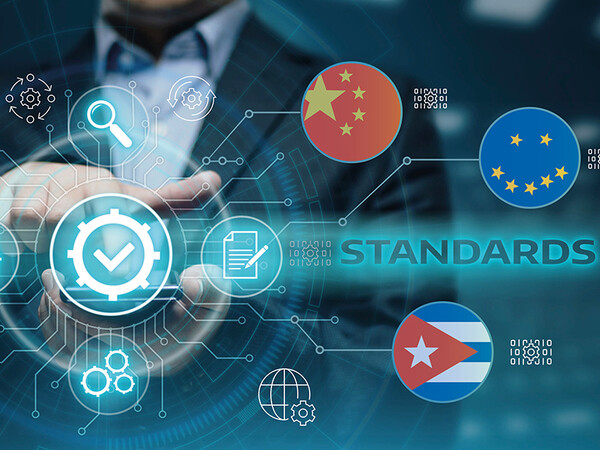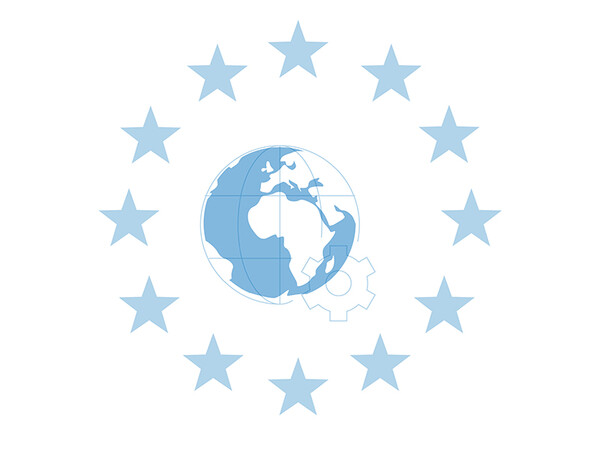René Hermann has been the chairman of the working group CEN TC10 WG1 – "Lifts and service lifts" and the successor of the late Ian Jones since 1 January 2021. Hermann explained what is in store for the lift industry and when the publication of the two standards can be expected in a discussion with the LIFTjournal.
Why did you accept this office?
Hermann: I had been active in WG 1 for some time and had often expressed critical opinions. But you can’t always just criticise; you also have to be ready to take charge and get actively involved. The work is a huge challenge, because we have two big areas of responsibility. On the one hand, we have to prepare a worldwide ISO standard, which will also be applied in Europe as an EN ISO standard. At the same time, the EU Commission has introduced strict quality assurance as part of the harmonisation of standards.
For EN 81-20 and EN 81-50, we got over 800 comments for corrections from the EU. The main point of criticism was that we had not observed the CEN regulations for the structure of standards that are determined in the CEN rules of procedure in part 3. Now the past has caught up with us, since we did not always consistently observe these rules in preparing the existing standards.
What are the main tasks and topics of CEN/TC10-WG1?
Hermann: The current main task is working on EN ISO 8100-1/2. Due to the great workload, we have put working on the other standards on the back burner. An internal survey in working group 1 on ISO 8100-1/2 produced a great many comments, which will have to be worked into the standard. Parallel to this, the EU Commission listed over 800 complaints as part of the harmonisation of EN 81-20/50, which likewise have to be corrected.
These many comments have to be processed in parallel and finally integrated in EN ISO 8100-1/2. To master this challenge, we will have to focus on this work in full. We have to be pragmatic here and not be afraid of admitting gaps; I think that’s one of my strengths. The experience I was able to gather in 37 years in development at Schindler is a great help to me in this regard.
When do you expect EN ISO 8100-1/2 to be published?
Hermann: This will definitely not be the case before mid-2024. This is a long time span, but we got a great many comments from two sides. The goal is for us to be able to distribute ISO 8100-1/2 internally for coordination at the beginning of next year in the two working groups CEN TC10 WG1 and ISO TC178 WG4. I expect a great many comments from this coordination in turn, which will then have to be processed.
 Photo: © Collage okapidesign / alexandersikov //123RF.com
Photo: © Collage okapidesign / alexandersikov //123RF.comAs a result of the many comments of both the EU Commission as well as of the standard committees, both standards underwent very great changes. This is a big challenge. However, the demands of the EU Commission on CEN as part of the harmonisation of standards does not only affect the lift sector but is also causing upheaval in other industries.
What new features do you expect?
Hermann: The most important new features involve the new requirements, such as alternative lifting gear, vertical sliding doors or the brakes of lift machinery. The structure of the standard will also change fundamentally. For example, the chapter "Assumptions" will disappear, and the points will have to be defined as requirements in the normative section of the document or as delimitation in the use area.
In addition, all of the requirements in the standards will have to be formulated to ensure that they are objectively verifiable and measurable. Formulations like "large enough", "as small as possible" are no longer allowed. Effectively measurable sizes must be used. Personally, I think this will create more clarity for the user.
How is this change going to influence lift builders, component manufacturers and testing organisations?
Hermann: They will definitely have a great influence in every area, both on assemblers, manufacturers of security components, the standardisation committees as well as organisations that make conformity assessments. There are more precise formulations, new requirements, etc.
Delimitation of the lift from the building is another important requirement of the EU Commission. A lift builder delivers a machine in a building. Consequently, we will move all requirements referring to the building from the requirements of the lift to a separate informational appendix. In my view, this is an improvement and also a simplification for us as lift builders, since the interfaces to the building are summarised in their own informational appendix.
What will be the biggest change for component manufacturers?
Hermann: Some examples that occur to me are the requirements on hydraulic hoses or security glass. There are now standards for such components. The lift standards will undoubtedly be reformed and there will also be those some who call this a revolution. But at the end of the day, I don’t think that the jump will in practice be as great as that from EN 81-1 to EN 81-20.
There aren’t really any great changes for component manufacturers. The new requirements and machine brake may be an exception. The specification of requirements and reference to industrial standards for components or parts will result in more clarity.
What influence do component manufacturers in the lift sector have on standards?
Hermann: At the moment, not very much. Actually, I’d expect more input and more active cooperation in standardisation. I think this is a great shame. I really expected a little more involvement from component manufacturers. CEN WG1 includes over 50 people, but only a minority make an effective active contribution. But this is thoroughly understandable, since the complexity and multitude of standards makes it difficult for component manufacturers and also for SMEs to stay on top of things. As a result, getting involved in the many working groups involves a great deal of effort.
 Photo: © okapidesign
Photo: © okapidesignThat’s why my plea is for the entire standard structure to be simplified. Currently, changing one standard affects many other standards. As soon as one standard has been changed, all of the others have to be revised too. Personally, that’s why I think we should risk a big change and return to simpler structures. Compliance with the Lift Directive should be facilitated in a single EN ISO 8100-1 standard. All other standards would then be additional optional standards, such as for "Vandalism security" or "Earthquake security". Harmonising these is not absolutely essential. For example, EN 81-28 should be integrated in EN ISO 8100-1.
Such simplification would in particular help the small and medium-sized companies to implement the standards. Such a simplification will happen and has to, the only question is how fast – after all, it’s almost a political process.
Will the standard be implemented worldwide or will there be exceptions?
Hermann: Those countries that have already introduced EN 81-20 and EN 81-50 will also apply ISO 8100-1/2. However, there is a risk of country-specific requirements being imposed in addition. But thanks to the regular communication with ISO TC 178 members, we already know many of the requirements and can discuss them. As a result, I expect the ISO standard to be applied unchanged.
Will the new standard also influence the major subjects in the sector, such as digitalisation, cyber security, barrier freedom and sustainability?
Hermann: No, this is also not the scope of this security standard. There are already standards for these topics or they are being prepared. However, in Europe, we must observe exactly what happens with the Machinery Directive, since the topics of cyber security or digitalisation in particular are being discussed there. The lift industry cannot simply decouple itself here, since the Machinery Directive is the foundation of the Lift Directive. New requirements of the future Machinery Regulation will definitely also influence the Lift Directive.
That’s why adopting a wider perspective is important. What is the industrial standard in mechanical engineering regarding these subjects? We should orient ourselves far more to the current technological state of the mechanical industry in these areas instead of writing our own lift standards.
You are also still a director in the ELA. How do you see the current and future role of the ELA, especially in Asia and North America?
Hermann: Cooperation with China is a delicate as well as technically complex subject. The ELA should also pay attention to Europe remaining strong and real cooperation occurring instead of just a know-how transfer. The advantage in Europe is that we have many basic rules, such as occupational safety. The ELA can definitely provide good support in these areas.
Cooperation with the USA is definitely not simple either, since it has its own standards structure, which differs considerably from the European one. I regard harmonisation there as quite difficult, especially when it comes to electrical components. In addition, in the USA there are many responsible bodies with different requirements for the licensing and acceptance of lifts. In Europe, we are in a wonderful position with the same conformity assessment procedures and open borders.
How do you see the role of the ELA with regard to component manufacturers and SMEs?
Hermann: I have the feeling there is a certain degree of friction there. I think the component manufacturers ought to orient themselves more to the industry standard instead of to EN 81-20 and EN 81-50. We lift builders should not demand special basic requirements for components that do not meet the industry standard.
No doubt, there were also historical reasons for these special requirements and there is also a certain degree of sealing the market off from the mechanical industry. But the ELA still has to guarantee that it continues to fulfil its role as the representative and defender of the interests of SMEs and component manufacturers.
The interview was held by Ulrike Lotze.
Who is René Hermann? René Hermann has been a key member of the CEN TC10 WG1 – "Lifts and service lifts" working group for many years and this year also became its chairman. He is a qualified Swiss electrical engineer and graduate of ETH Zurich and has been working in research and development in the lift industry for Schindler Aufzüge AG for 37 years. Rene Hermann is a member of the board of management of the European Lift Association (ELA) and is chairman of the Technical Committee of the Swiss Lift Association VSA.
What does CEN TC10 WG1 do? The working group CEN TC10 WG1 – "Lifts and service lifts" is responsible for the most important lift standards such as EN 81-20, EN 81-50 or EN 81-28. Currently, its main task is revising the two standards EN ISO 8100-1:2019 and EN ISO 8100-2:2019. These are identical to EN 81-20:2014 and EN 81-50:2014. The goal of the revision is publication as lift standards EN ISO 8100-1 and EN ISO 8100-2, which can be applied worldwide as an ISO standard.
"This project is an enormous challenge, since both completely new requirements, such as new traction equipment or vertical sliding doors are considered, while the amended legal and qualitative requirements of the EU Commission on harmonised standards also have to be met," explained Hermann. "Meeting the EU’s requirements and aligning these with the global technical requirements of the ISO members is new territory for WG 1 and is set to cause us quite a few headaches".























Write a comment